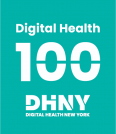Do patients want primary care as much as the healthcare system wants them to want primary care?
By Keith Algozzine, PA-C, founder and CEO, UCM Digital Health
In healthcare, we must identify the problems. But not just the problems – the correct problems. In this case, in today’s blog post, I want to focus on the confusion and on the hype in the healthcare industry right now around primary care.
Is one of the biggest problems in healthcare today that patients need better primary care? I don’t think so. Is the biggest problem in healthcare today that too many healthcare leaders think primary care is the solution. Yes.
There’s a trending belief that primary care is the #1 solution to healthcare’s cost and quality problems. At best, that belief is confusing. At worst, it’s totally missing the boat. This thinking runs the risk of missing the most critical factor to fixing healthcare’s cost and quality problems; it’s full of assumptions about what patients want and need – not to mention the presumption of what primary care actually is, and what it means to the various stakeholders in the healthcare ecosystem.
Primary care means different things to different people. Within any individual subgroup (patients, providers, insurers, vendors, etc.), there will be different answers. We know this. Finding out what the patients want and what they need is multifactorial. Each patient group may have some similarities, but what an individual patient needs is different and ever changing. We know this.
We must stop generalizing primary care as a broad solution when it comes to cost, quality, access, satisfaction, predictability, and personalized care. It is incumbent on all of us in healthcare to stop falling back on the idea of primary care as the solution and just start solving the patient’s specific problem.
Who wants primary care? And why?
The correct problem we are trying to solve is lowering cost and improving quality. What do the patients want and need? Here’s the real question: Do patients want primary care as much as the healthcare system wants them to want primary care?
Hold that thought though for a minute.
Let’s start with some of the issues that surround using the loose definition of primary care and implore why it’s problematic. Ask any group of providers, payers or patients what primary care is, and get a multitude of different answers. That’s a cataclysmic and fatal flaw problem in and of itself: How can a lack of primary care be the problem and more primary care be the solution when all the stakeholders don’t agree on – or even know – what primary care means?
Can primary care be defined by …
- the patient’s relationship with one provider?
- the specialty of family medicine?
- the general gatekeeper for all problems?
- not just a gatekeeper, but an overall manager, integrator and coach for all problems?
Is primary care really the management of all problems for all people? Is it the management of all acute and chronic diseases, along with it is wellness and a proactive approach that defines primary care? There are, of course, many more examples to mention, and while there’s truth in the assertion that it’s all of the above, and more… How can one group in healthcare really be all things to all people effectively and efficiently?
Most of these definitions and subsequent strategies, plans and executions remain rooted in the belief of what we think is most important in healthcare, simply due to the long-held misconceptions of …
- it’s what we as a healthcare system have always done
- it’s how we as a healthcare system are paid
- it’s what we as a healthcare system have as our biases based off of ‘we know better’ as the healthcare experts
- it’s what we as the healthcare system know to be easier to do it this way
- … and so on.
I’ll call it as I see it:
The Hype Issue
The idea of primary care as the solution has become opportunistic from a pure marketing and business position. Meaning, we’re reaching for solutions to a problem without putting much thought or hard work creating a viable, valuable solution to the real problem. Many of these solutions are incredibly lightweight, or extremely intensive and will not scale and are really just the same solution that’s been tried time and again – but this time with a newly added emphasis and message along the lines of, ‘buy my product or service because we do primary care.’ This does more harm than good in many cases for the healthcare system and the patients.
The Pride Issue
The idea that one group of medical providers (in this case family medicine/internal medicine) can be all things to all people is often rooted in altruism — but quickly turns to pride. The idea that some primary care providers are saying “this is my patient” has to end. That is not only factually inaccurate, but harmful. I personally would say to anyone who uses this terminology: “No, I’m not your patient, you are my provider – and by the way, you are my provider right now at this time, for this problem that I am trying to solve.” That is not only the truth, but allows us as medical providers to think as a team and be servants to our patients, which is exactly where we should be. We aren’t at the top looking down at ‘our patients.’ We should be at the bottom looking up to them as their providers, and part of their team.
The real problem? It’s not easy to solve.
We must look to our patients for what they want and need. And guess what? That’s not easy, in fact it’s really complicated and nuanced, because patients aren’t all the same. They’re young, old, healthy, chronically ill, heavy utilizers, light utilizers, tech savvy or not, rural, urban, rich, poor, different definitions of what is healthy for them, and the list goes on. Then, to make it even harder, patients don’t always know what they want until they want it; and, finally, patients change what they want and what they need, due to their age, income, health, location, values, etc. Patients are all dynamic, nuanced, and ever changing.
I don’t have a perfect solution to this problem, but I do know this: the correct problem isn’t that we don’t have good enough ‘primary care’. The problem is we need to identify what the patient wants and needs, first and foremost. They present to us our best problem – and that is the challenge to help them in the ways they need us to. We owe it to them to give them our best possible solution.
This problem of getting the patient what they need and or want at the time they want and or need it is something my team and I at UCM Digital Health are on a mission to try and solve for the patient. The patients are our north star. We must find ways to bring healthcare teams (providers, payers, vendors and more) together and collectively solve patients’ problems. We are relentless and unapologetic in our pursuit to make sure the patients’ needs and wants are met, where they need to be met in the most appropriate manner of patient care.
So I would ask everyone to look in the mirror and stop focusing on ourselves as part of the healthcare system, because whether we are a provider, payer, vendor, etc., – no matter what, we are all patients!
Keith Algozzine, PA-C is a board certified Physician Assistant and co-founder and CEO of UCM Digital Health. He believes that the virtual ER will change the way emergency healthcare is delivered. A passionate advocate for change in emergency medicine, he is committed to ensuring patients receive the right care, at the right time — when and where they need it most. often authors blog posts on topics related to virtual emergency medicine and the innovations around telemedicine that are changing the way healthcare works.






